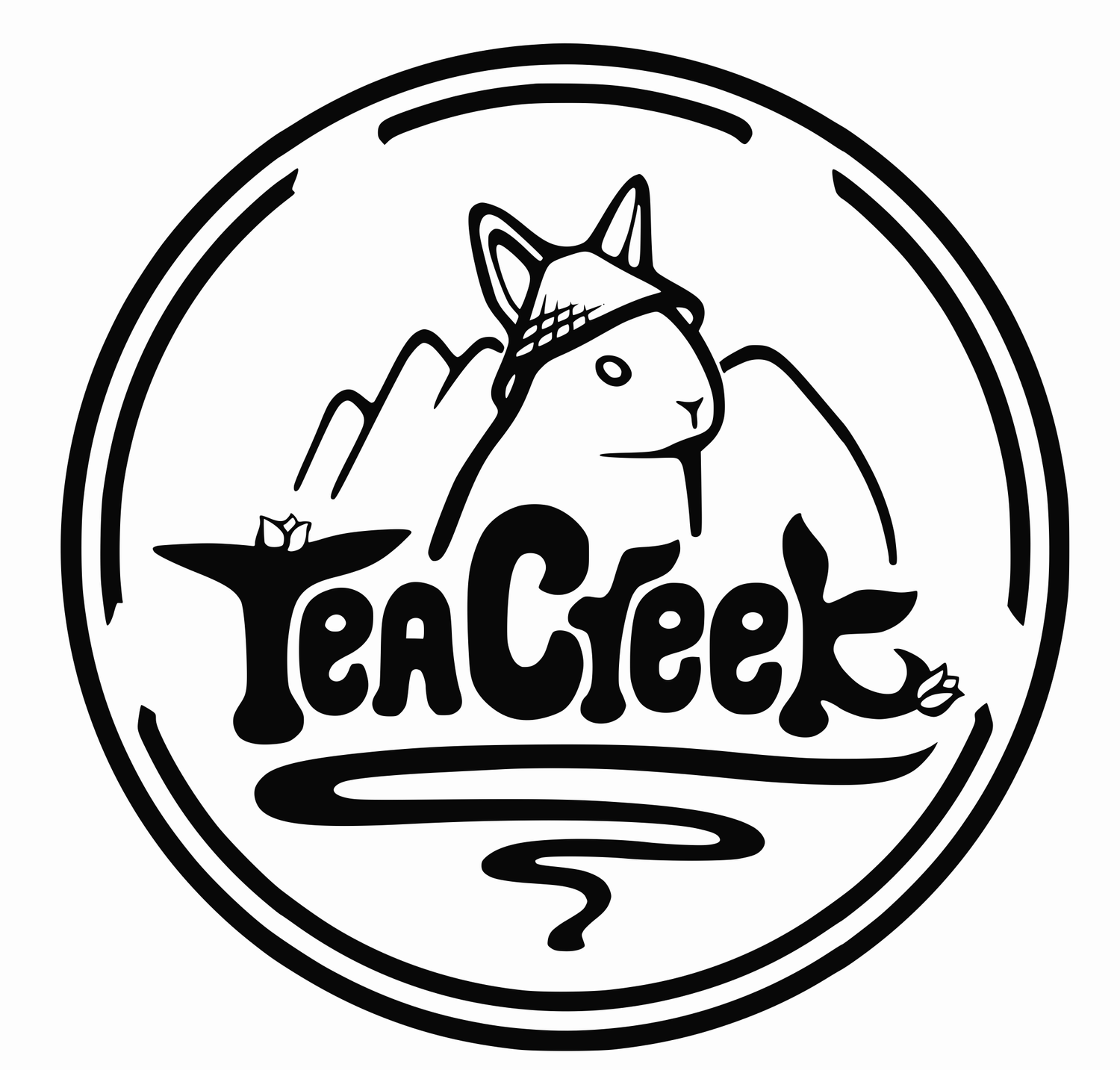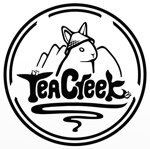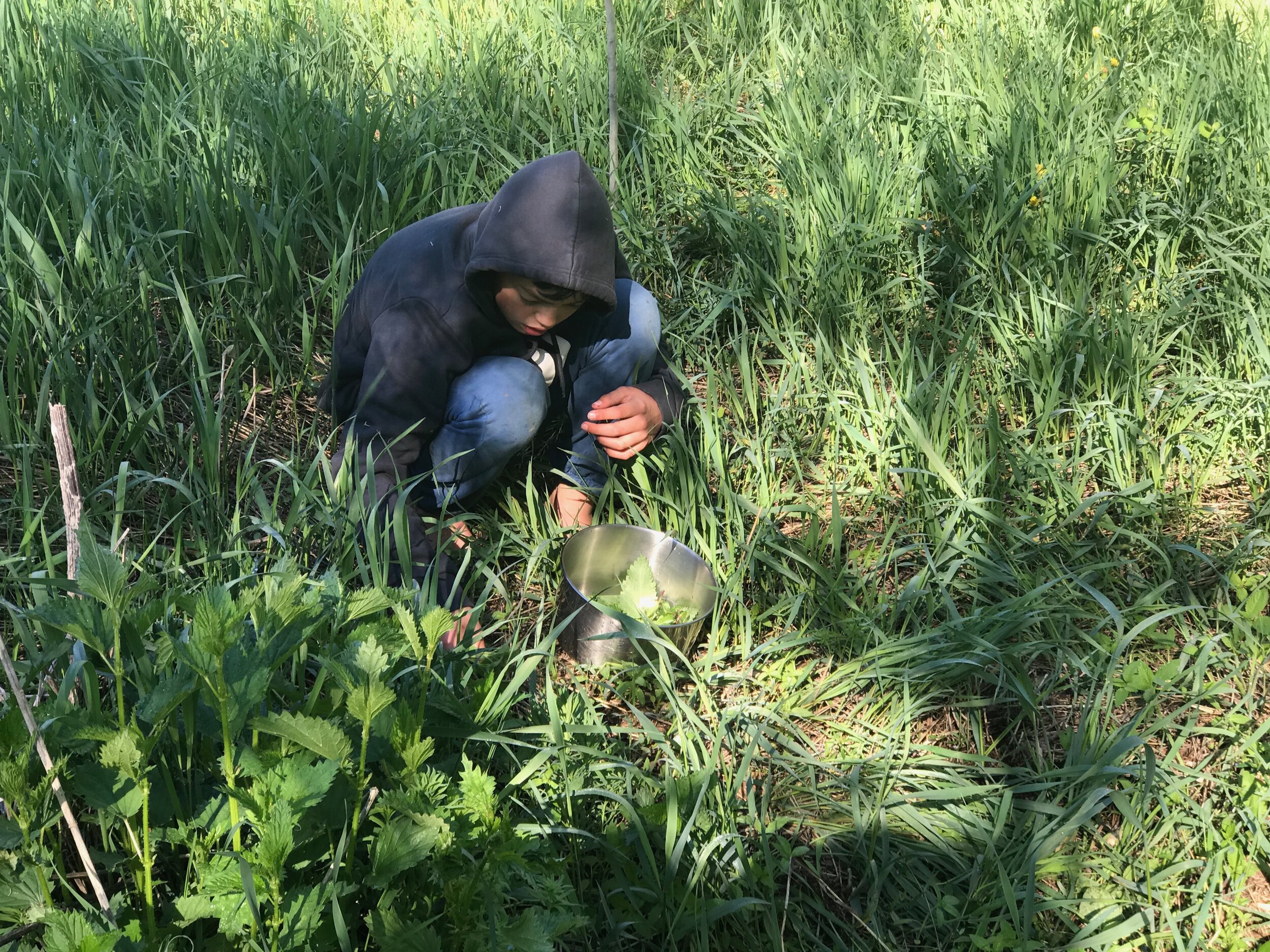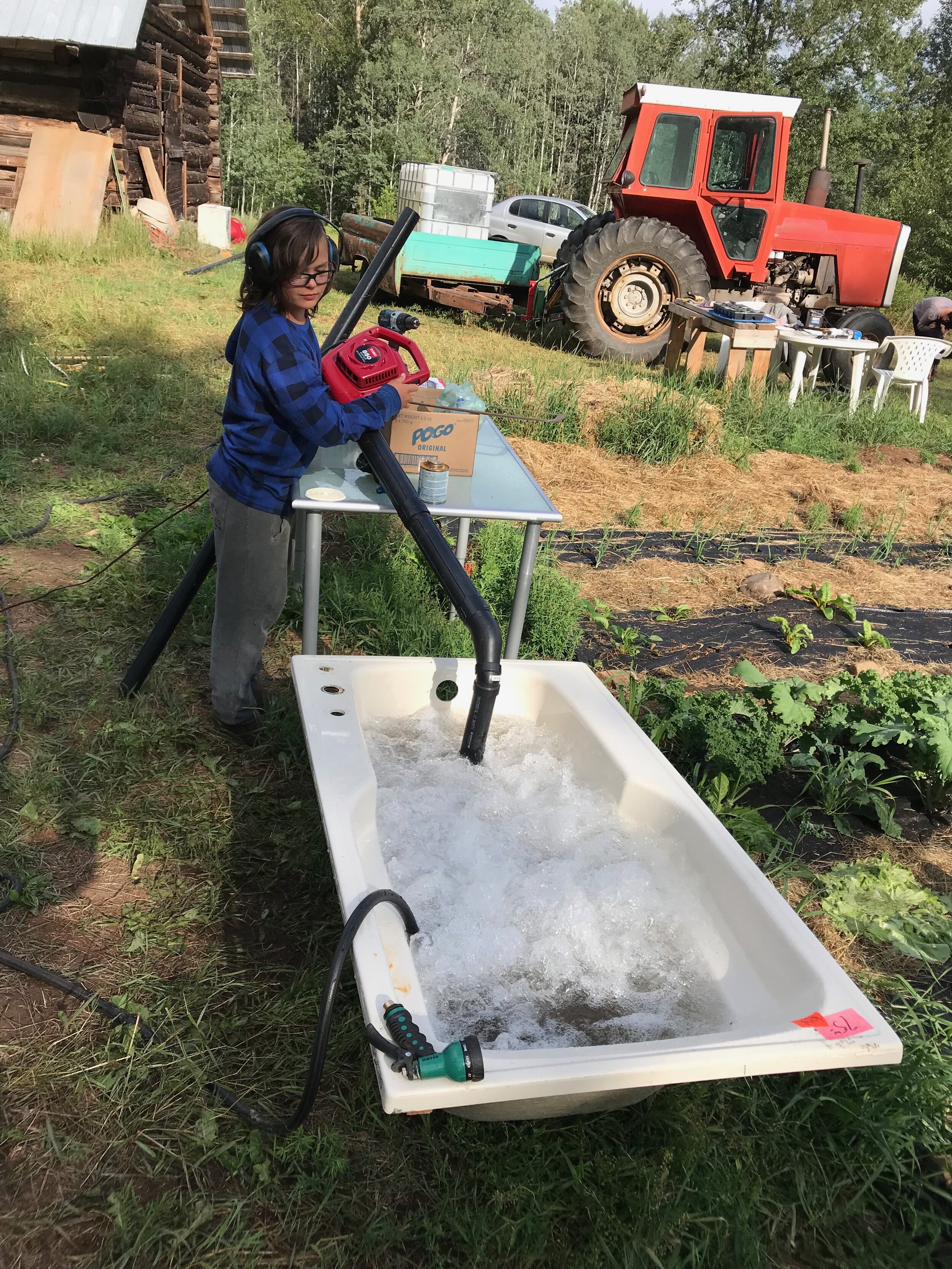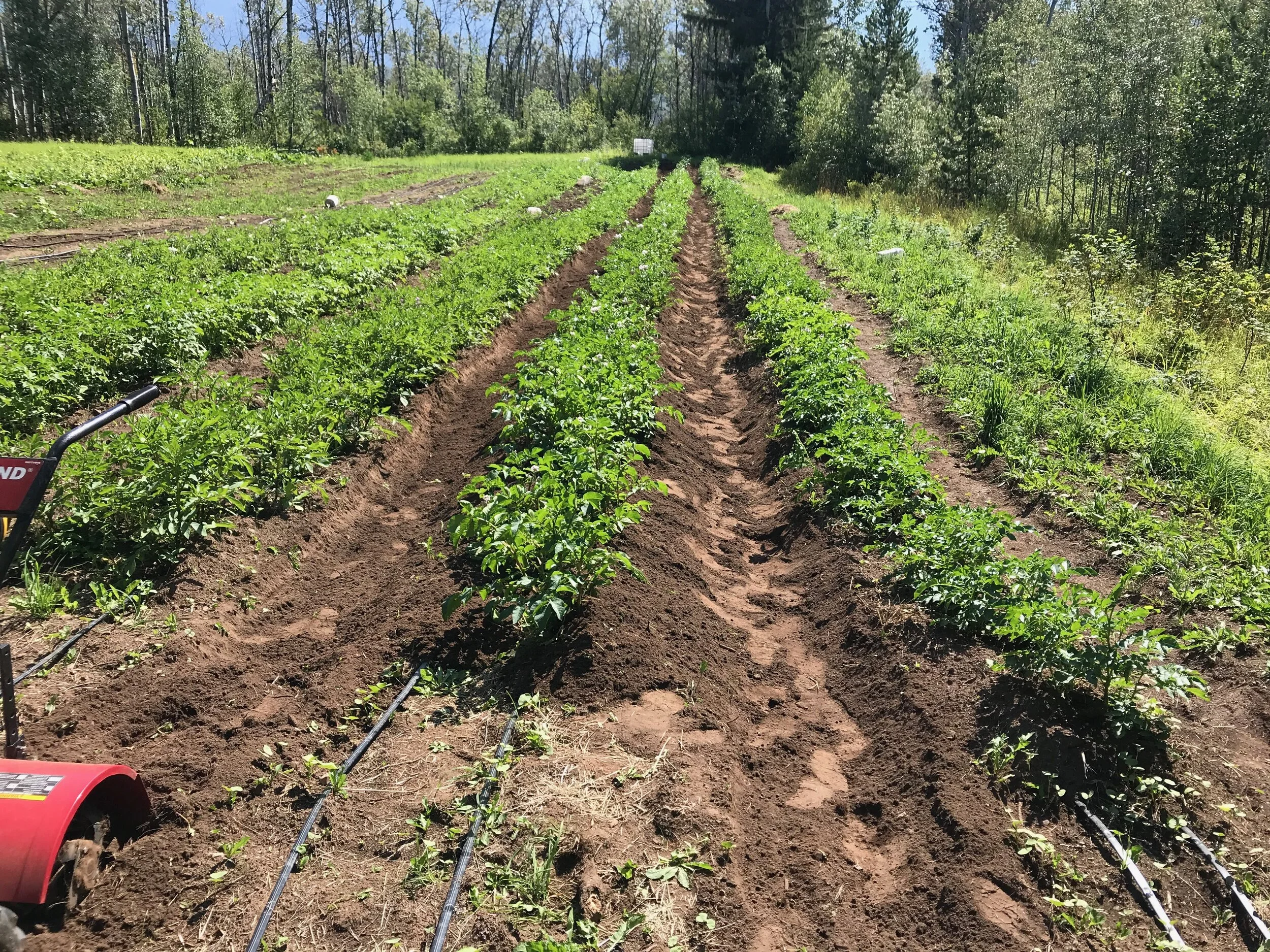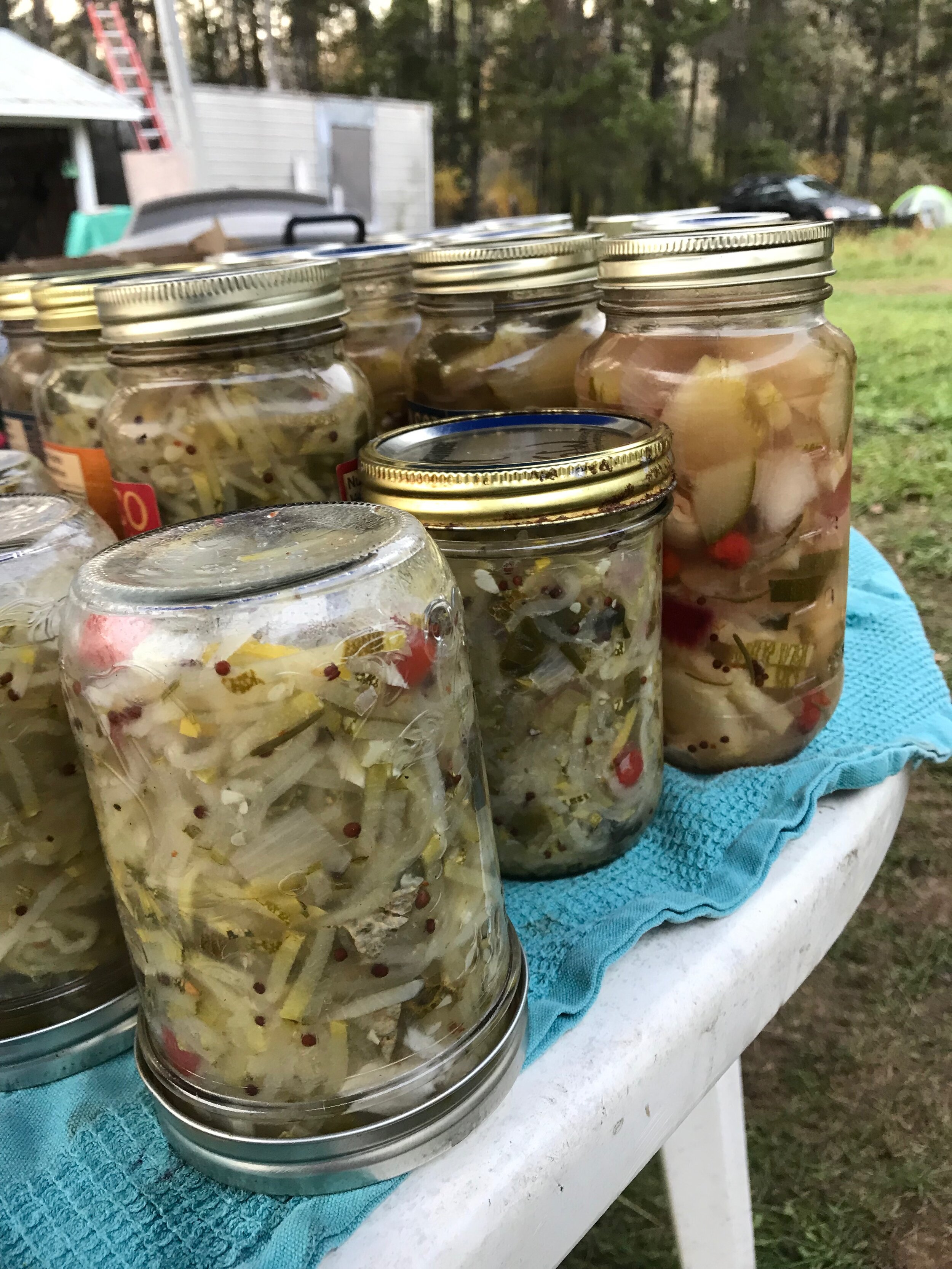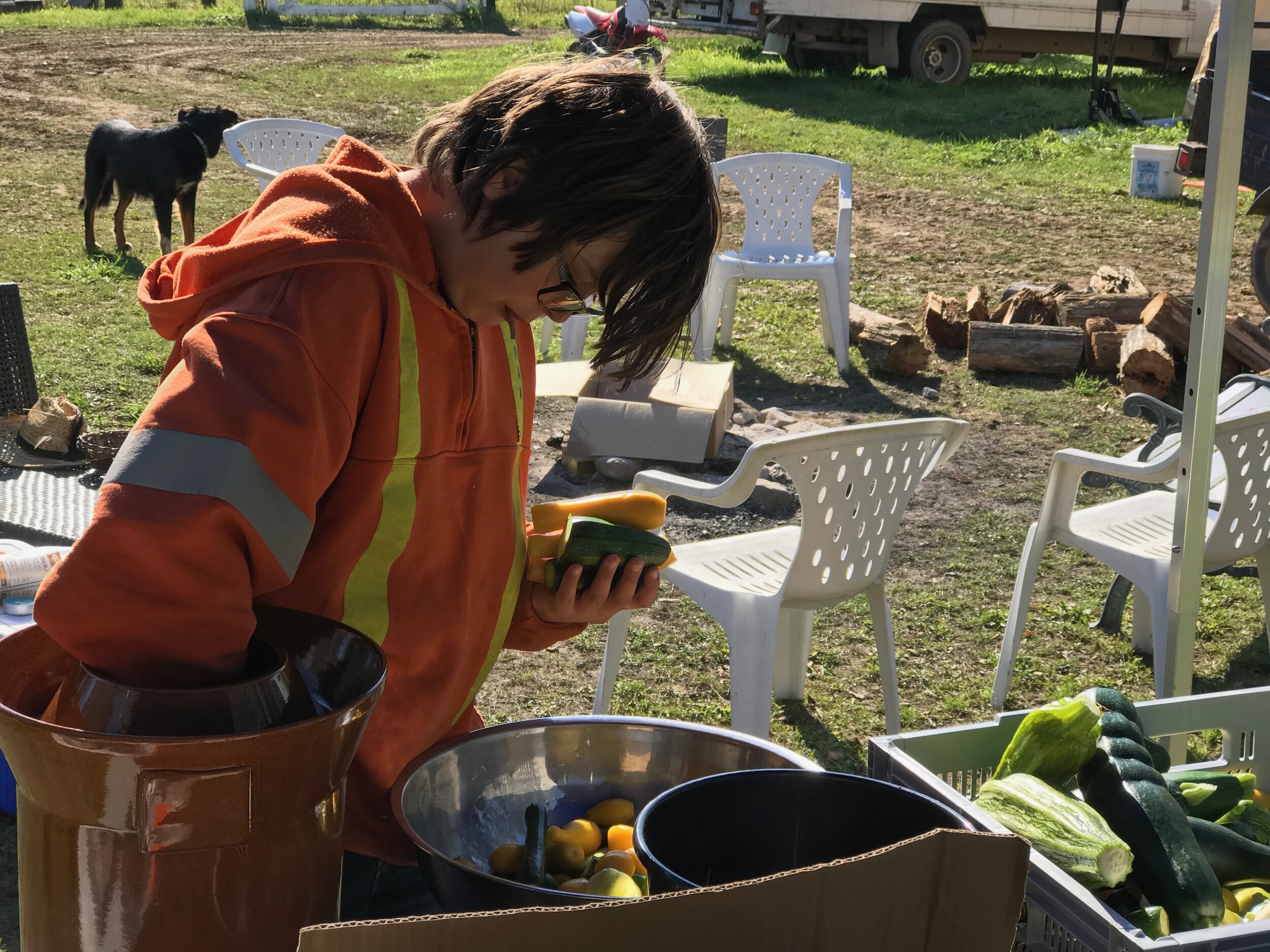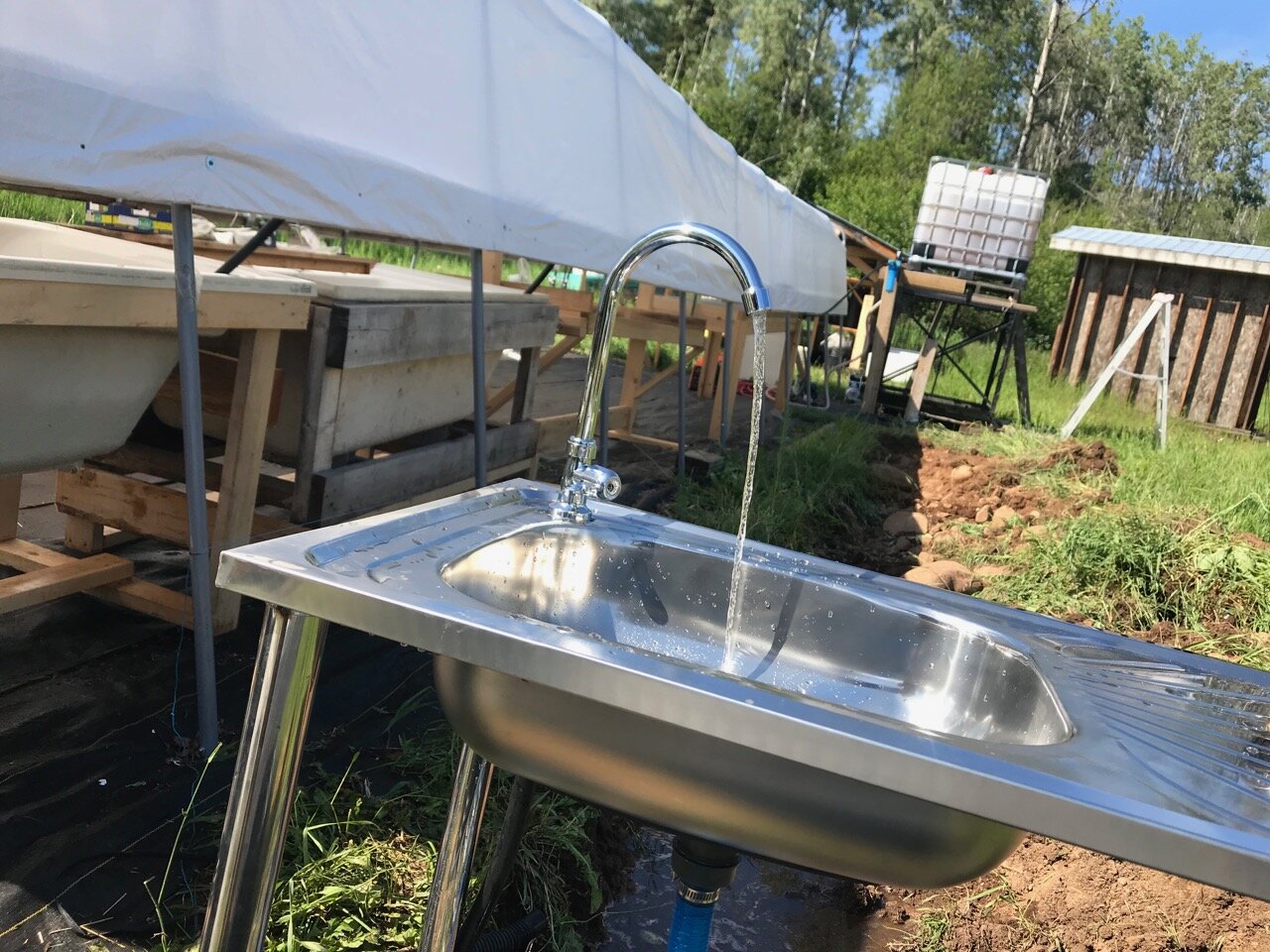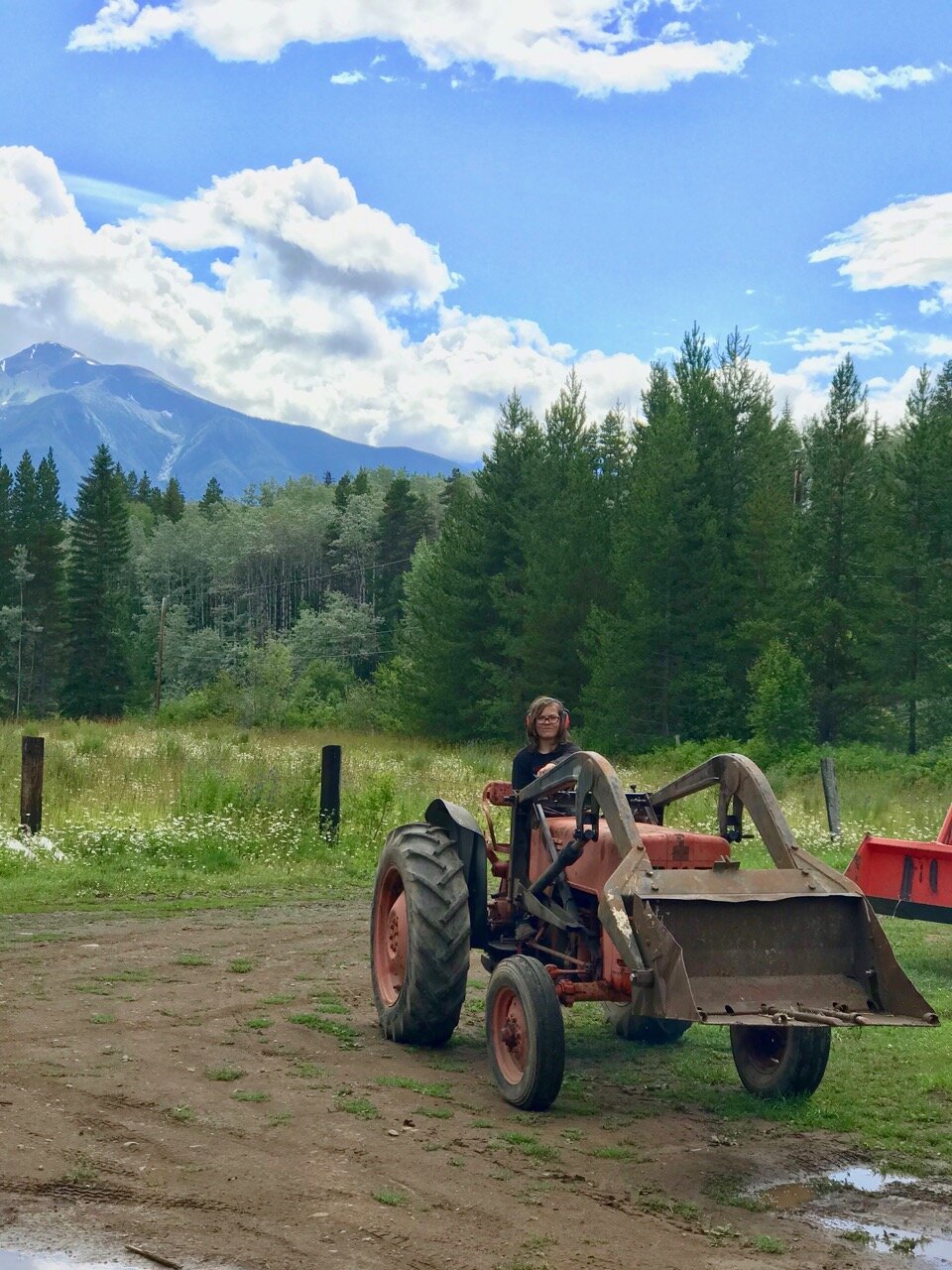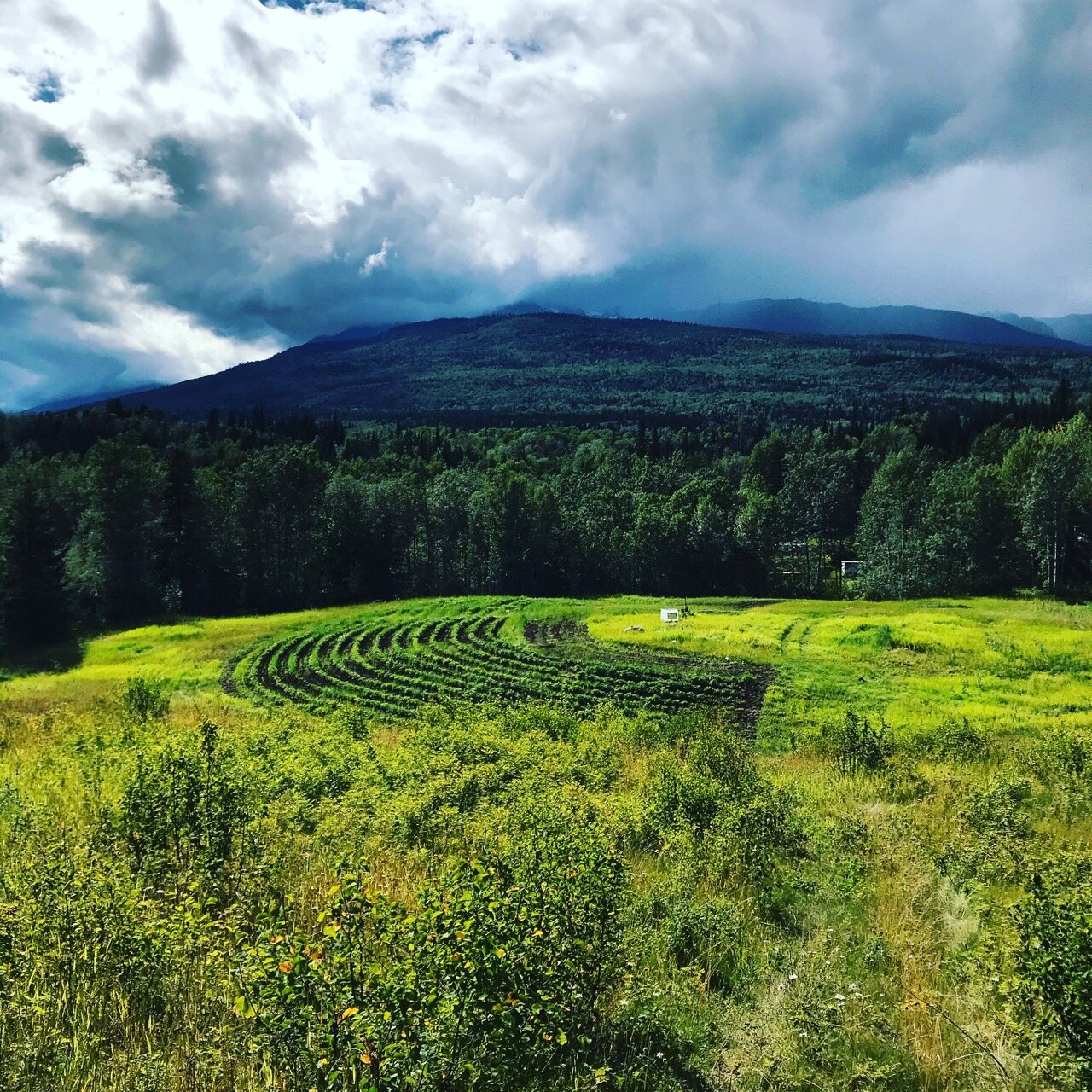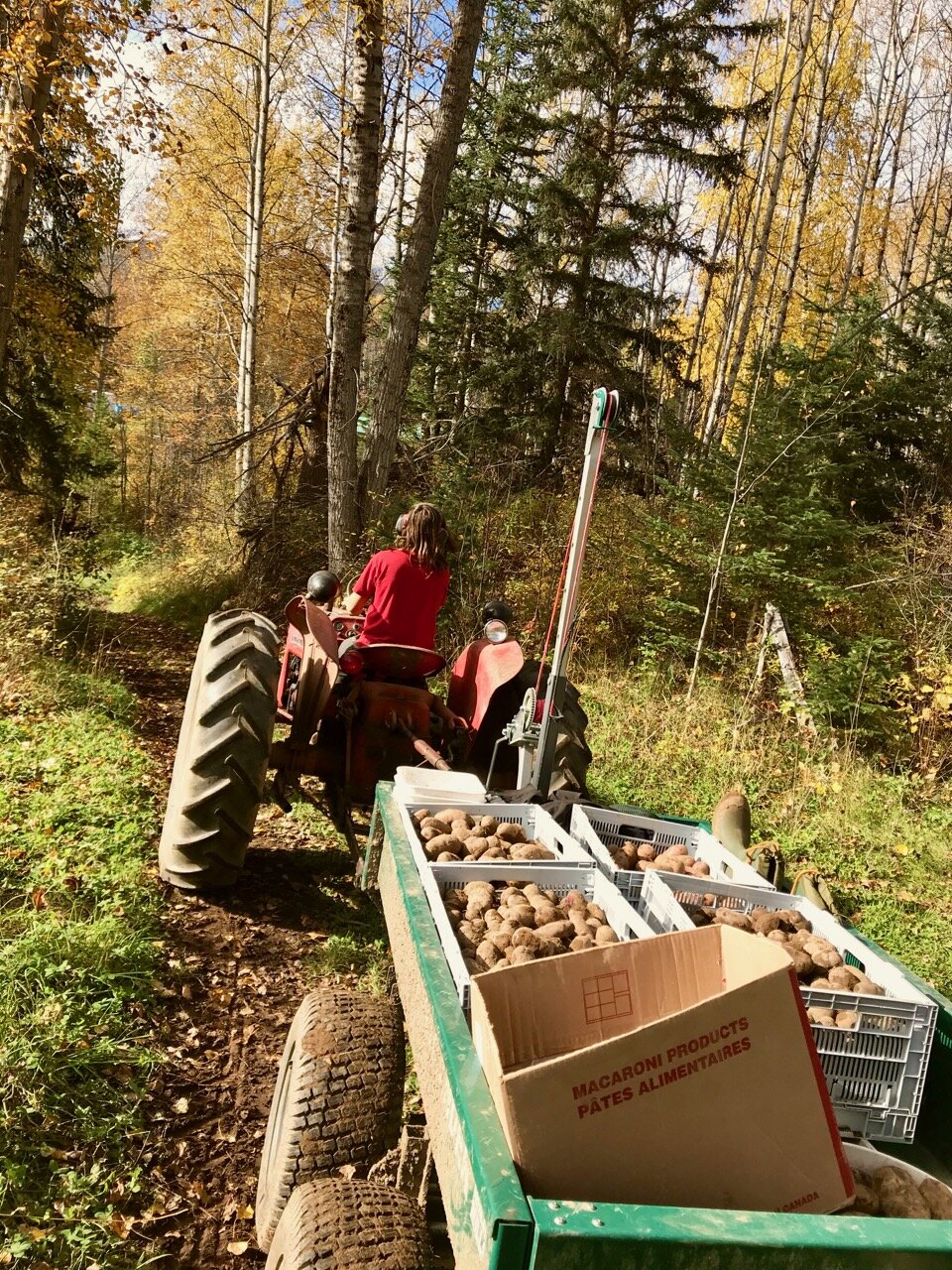Our goal: high-production, affordable, naturally grown local food.
2019-2020 in Photos
Our 2019 test gardens were successful: a surplus of food was grown on less than 1/4 acre using high-intensity organic methods. In 2020 we expanded on our successes and added a demonstration tractor cultivated field. The below photos show some of our process in implementing our proof-of-concept high production growing and on-site processing.
Started seeds in the early spring. Seed germination is critically important.
Ground-breaking tilling (and rock picking!), an essential step to revitalizing soil. The plan is to move to low-till systems once established. Low-till promotes more robust soil, which grows better plants.
Wild-harvesting greens is an important part of food security early in the year. Many meals can be made from wild edibles before the gardens mature (and after they mature).
Plowing a field for the first time in early spring. Plowing turns over the soil, and is followed by tilling.
Transplanting through landscape fabric, an organic weed control strategy to improve yields and greatly reduce labour needs over the season.
Test field (we call it the barn field), with old hay mulch for pathways. The hay suppresses weeds and adds to the soil.
Teaching potato planting in Spring 2019. We planted a wide variety of potatoes to see what would do well in our climate and soil.
One month after planting, the whole test field was growing amazingly well. Irrigation is direct using drip tape, which increases production and efficiency.
Harvesting for our Local Good Food Box. Our LGF Boxes use thousands of heads of lettuce every month!
Testing a bubbler setup that cleans the field greens, removing dirt and bugs.
Harvested and cleaned head lettuce. The "wash pack" system is in the background. Veggies are washed in sterilized water, then dried on racks, then packed into sterile bags.
Potato patch that uses drip tape instead of sprinklers. Drip tape is over 75% more effective than sprinklers.
Harvesting baby potatoes. Youth visited and got to harvest the veggies and bring them home.
Harvesting kale with the barn field garden in background.
Food preservation using garden veggies as well as wild harvested edibles.
Finished pickles cooling and waiting to be stored for the winter.
Some of the tomato harvest, grown in a small test greenhouse.
We grew a wide variety of potatoes and made notes on which ones grew well.
These are a variety from a local First Nation that has been growing for over 100 years. They are well adapted to the local soil and were highly productive.
Moving the building that would become the farm stand.
Preserving food with lacto-fermentation, which works very well.
We create our own woodchips on site, which we use for mulch all over the farm. The chips will also be part of our compost system as we create our own compost and topsoil.
High-intensity salad-green beds growing and being seeded in spring 2020. Each bed is 50' long and can provide up to 75 lbs of greens per harvest! This small field can provide over 4,000lb of greens per year.
Greens growing under low tunnels. Low tunnels provide the lowest cost per sq. ft. of climate control in northwest BC. Each 50' bed provides 180 heads of lettuce per harvest, and can provide 2-3 harvests per season.
Our revised for 2020 "wash pack" assembly line. Here veggies are taken right from the field, washed, dried, packed, and labeled in a clean environment. Then they are chilled and stored for sale.
Fresh lettuce and greens, packed and ready for grocery store shelves, spring 2020. Getting food into places where people usually buy their food is an important part of our food sovereignty efforts.
Our local farm produce for sale at the local grocery store, demonstrating that local vegetables can displace imported produce on store shelves.
Double-washed spring salad mix on drying rack. We experimented with a variety of healthy delicious greens in the salad mixes.
One of our hand washing stations. Everyone must frequently hand wash, especially prior to handling food.
Potato field tractor planted and cultivated on contour to help with water retention and even light exposure. The field faces south.
Heavy duty mechanics are an important part of farm operation. Noah restored this old parts tractor to operating condition.
Popular imported crops like Broccoli can be easily grown in the northwest - with better size, colour, and flavour than the imports!
Nature provides a bounty of food. Here Saskatoon berries grow like crazy and make great jams, pies, and fresh eating.
Our Member of Parliament Taylor Bachrach toured our farm and even tried out our harvest systems!
The potato field after tractor hilling. The tractor offers large efficiency improvements over hand planting when you have a lot of land to work.
Alternate packaging - we invested in clam shell packing for the local market, as customers are more accustomed to salad mix this way.
Land based food education is a big part of what we do. Here a young lady from Kitselas prepares to bring leaf lettuce in for washing and packing.
Summer Students from Kitselas harvest food to bring back to the community. We earmarked over 90% of our harvest this year for trade and towards the traditional gift economy.
A gift box of assorted produce prepared.
Family from the coast arrive on the farm for a day of fun and food harvesting for other families back home.
Checking on a compost pile made from 100% local ingredients off the farm. There is also a coil of water pipe in the pile, we create free hot water from compost pile heat.
Ezra with some of the rainbow radishes he planted and harvested. Radishes are very fast growing and good for the greens and the roots.
Late season bed flipping - we grew too much food here, and after giving away as much as possible we composted the rest. We've shortened to bed lengths for future plantings.
Broccoli - fires wiped out 75% of the California crop in 2020. We grew a lot locally, with more flavour and lower cost
Noah with some Salanova lettuce, which grew very well.
Using tractor tools, in 2020 we harvested in 1 day the same volume of potatoes (over 1,200lb) that took 2 weeks by hand in 2019.
Local youth came with their mentors and harvested a variety of crops
Noah with Cabbage - all the brassicas did very well and over-yielded in 2020.
Food boxes were distributed to chiefs and community members throughout 2020
